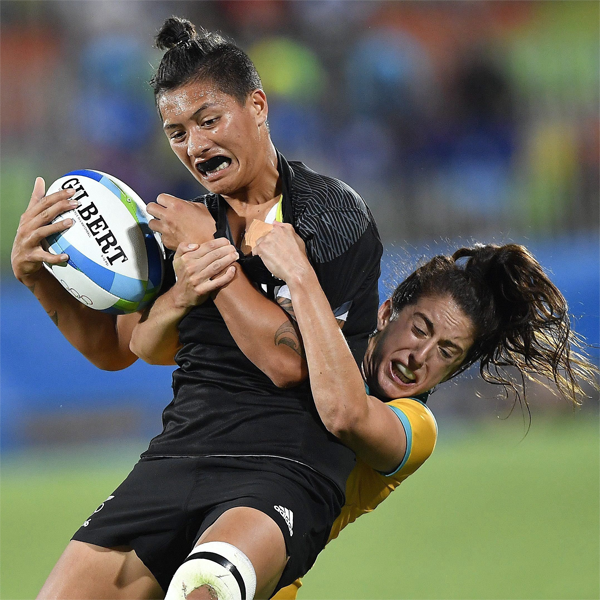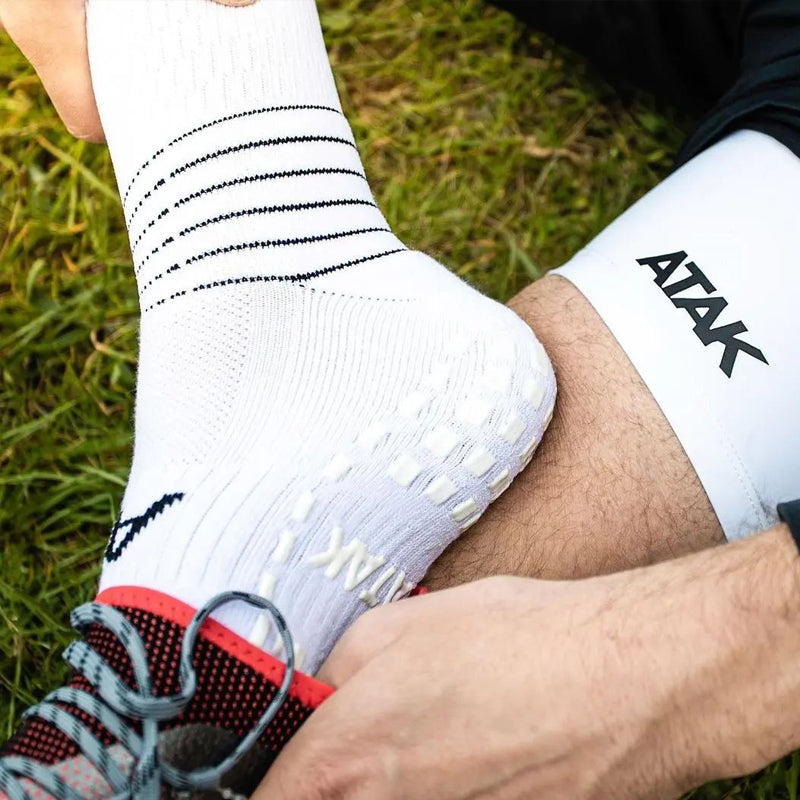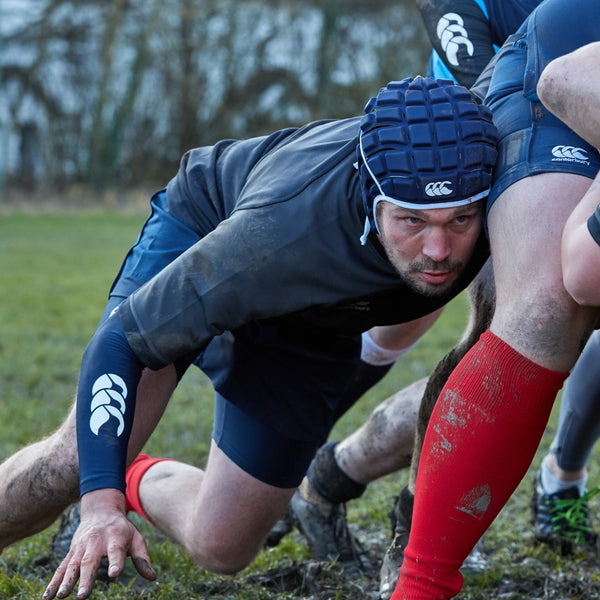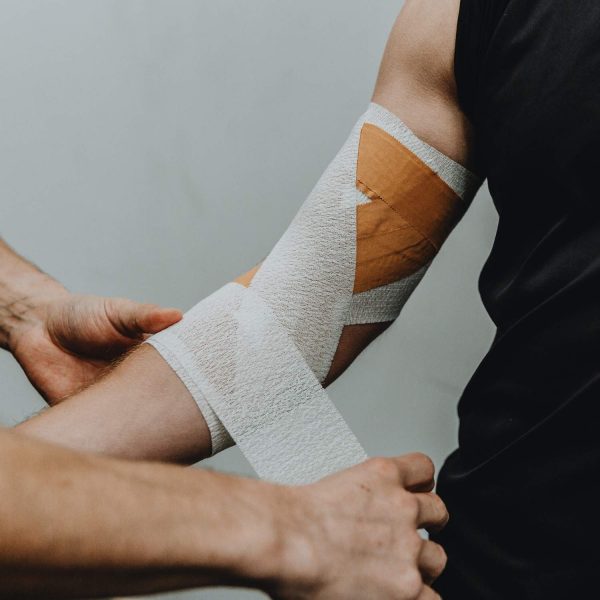The Essential Role of Thigh Tape in Rugby
Rugby players frequently utilize thigh tape during matches. This practice aids in various vital functions. Thigh tape serves as both injury prevention and performance enhancer. It’s strategically placed on players’ thighs to ensure better grip during lineouts. The tape allows players to be lifted more efficiently. Improved grip leads to cleaner contests for the ball in the air. Thigh tape also helps safeguard muscles from strains or sprains. Physiotherapists or fellow teammates often apply the tape. The process takes place before the start of a game. Thigh tape is not limited to injury prevention. It also supports players recovering from previous injuries. On the pitch, thigh tape is a common sight. Players, especially those involved in lineouts, consider it essential. The use of thigh tape has grown along with the evolution of the game. Historically, lifting in lineouts wasn’t legal. The legalization of lifting changed the lineout dynamics. Hence, thigh tape became increasingly relevant. Thigh tape is diverse in both form and function. Whether for grip, injury support, or recovery, it’s a rugby staple. It is a critical element of the rugby kit for many players.
A Brief History of Tape Usage in Rugby Games
The tape has a storied history in rugby. Before 1999, lifting players in lineouts wasn’t legal. Players had to jump unaided to catch the ball. This made lineouts unpredictable and messy. When lifting became legal, the game changed. Players started taping their thighs to improve lifts. This allowed for a more structured and strategic contest at lineouts. Tape usage has since become integral to rugby. It aligns with the sport’s evolution to a more dynamic and tactical game. Originally, tape was more for medical use. It supported injured players or those coming back from injuries. Over time, its role expanded to include performance enhancement. Tape now helps in grip, lift and stability during intense matches. It also helps with injury prevention and management. This evolution of tape use parallels rugby’s own development. As the game became more complex, so did the tools used by its players. Today, tape is as much a part of rugby as the ball and the boots. Players aim for a balance of safety and success on the field. And tape plays a big role in achieving that balance.

The Types of Tape Used by Rugby Players
Rugby requires various tapes for distinct purposes. Here we will look at three main types of tapes that rugby players use during games and training sessions.
Kinesiology Tape and Its Functions
Kinesiology tape is stretchy and supportive. It helps with pain management. It promotes healing and supports proper movement. This makes kinesiology tape great for recovery. Players often use it for muscle support.
Zinc Oxide Tape and Its Unique Features
Zinc oxide tape is strong and non-stretch. It provides rigid support. This makes it ideal for joint stability. Players use it to immobilize areas and prevent injuries. Zinc oxide tape is also skin-friendly and water-resistant.
Elastic Adhesive Bandage and Its Applications
Elastic adhesive bandages are flexible. They offer support without limiting movement. This tape is perfect for muscle strains and sprained ankles. Rugby players use this to secure lifting blocks during lineouts. It sticks well to the skin and does not slip during the game.
Each of these tapes has its own role in a rugby player’s kit. They protect, support, and help enhance performance on the field. The right tape choice depends on the player’s needs and the specific rugby position. Coaches and sports therapists often guide players in tape selection.

How Tape Supports Injury Prevention and Management
Rugby players use tape to prevent injuries. Tape stabilizes joints and muscles during games. It helps to avoid sprains and muscle strains. This reduces the risk of serious injuries. Players wrap tape around vulnerable areas like knees and ankles for extra support. The tape also provides compression. This can limit swelling if an injury occurs. For recovery, tape manages pain and aids healing. Kinesiology tape, for example, is used to treat muscle injuries. It also helps improve blood flow to the injured area. Good circulation speeds up the recovery process. Constant impacts and tackles make rugby a tough sport. Tape acts as a protective layer over the skin. This can protect from cuts and abrasions. When players return from injuries, tape offers them confidence. It provides the feeling of security they need to play at their best. Sports therapists often advise on which tape to use and how to use it. Their guidance ensures tape is applied correctly for maximum benefit. In summary, tape is crucial for both injury prevention and management in rugby.
The Science Behind a Better Grip: Lifting Blocks and Tape
When it comes to rugby, every small advantage can make a big difference. Lifting blocks and tape are not just simple accessories; they are rooted in science for improved performance during lineouts. Here’s why rugby players often turn to tape and lifting blocks for that all-important better grip.
Effective Grip with Lifting Blocks
Lifting blocks, usually made of foam or other grippy materials, are placed on the thighs of players. They create a solid area for lifters to grip onto. This means that during a lineout, players can hoist their teammates higher into the air to compete for the ball. As players get sweaty or if rain makes skin slippery, the blocks with tape provide a consistent surface to grab.
The Role of Tape in Enhancing Grip
Tape complements the lifting blocks by holding them firmly in place. It also adds a layer of grip on its own. A player’s skin can be slick from sweat or weather, but tape remains tacky. It enhances the lifter’s ability to maintain a strong hold. Applying tape correctly is essential to maximize grip and avoid slippage during the crucial moments of a lineout.
Together, lifting blocks and tape form a system that promotes a more efficient and effective contest for the ball in lineouts. They represent the practical application of biomechanics in rugby, where securing possession often means winning the game. For lifters and jumpers alike, the combination of lifting blocks and tape is a game-changer, quite literally lifting the standard of play.
Tape Selection: A Guide for Rugby Enthusiasts
Choosing the right tape is key for rugby players. Different tapes are suited for varied purposes. Here’s a quick guide to help rugby enthusiasts select the best tape for their needs.
Understanding Different Tapes and Their Uses
Kinesiology tape supports muscles and joints without restricting movement. It’s ideal for strains or recovery. Zinc oxide tape offers strong, non-stretch support for serious stability. It’s best for securing joints. Elastic adhesive bandages are flexible and stick well to the skin. They’re great for lifting blocks in lineouts.
Factors to Consider When Selecting Tape
When picking tape, consider the part of the body. For thighs and grips, elastic and strong tapes are best. For injury recovery, flexible, and supportive tapes can assist.
Reflect on the type of injury or the support needed. More rigid tapes offer stability. Stretchy tapes provide flexible support and movement.
Don’t forget comfort and skin reaction. Some tapes might cause irritation. It’s important to choose skin-friendly tape.
Weather and sweat can affect tape’s adhesion. Go for water-resistant options when necessary.
Seeking Professional Advice
Consult with a sports therapist. They can offer tailored advice for tape choice and use. Their expertise ensures the right tape application for maximum performance and prevention. Listening to professionals can help avoid injury and improve play.
By understanding the types of tape and following this guide, players can make informed choices. The right tape selection leads to better performance and fewer injuries.

Taping Techniques for Optimal Performance
Rugby players need to apply tape correctly for best results. Here’s how they do it:
Clean and Shave the Area
Before taping, players must clean their skin. A dry, clean surface helps the tape stick better. If the area is hairy, shaving is recommended. It makes the tape more effective and less painful to remove later.
Cut and Round Tape Edges
Players should pre-cut their tape. Rounded corners prevent the tape from catching on clothes. This minimizes discomfort and the risk of the tape coming off during the game.
Apply Anchor Points
It’s important to start and end with an anchor. These secure the tape in place. Proper anchoring keeps the tape from getting loose during play.
Follow Muscle and Joint Lines
When using kinesiology tape, players should align it with their body’s natural lines. This promotes support without restricting movement.
Seek Professional Help When Needed
If unsure about taping techniques, players should consult a professional. Sports therapists can provide guidance. They can show the right way to apply tape for different body parts.
By following these taping techniques, rugby players can maximize tape benefits. Correct application ensures the tape improves grip, supports muscles, and prevents injuries. Being meticulous about taping contributes to better performance and safety on the field.
The Impact of Tape on Athletic Performance and Recovery
Tape plays a crucial role in the performance and recovery of rugby players. Its benefits reach far beyond the visual aesthetics and taps into the enhancement of athletic capabilities. Let’s explore why taping is such a valuable tool on the rugby pitch.
Boosting Performance with Proper Taping
Rugby players often find taping essential for boosting their on-field performance. Here are some ways it helps:
- Tape stabilizes joints, allowing for confident, powerful plays.
- It increases proprioception, which is the body’s ability to sense movement and position.
- Players can push their limits, knowing they have additional support.
- Proper use of tape can improve the player’s sprinting and jumping abilities.
- During repetitive motions like scrumming, tape reduces the risk of overuse injuries.
Accelerating Recovery Through Taping
Tape isn’t just for the duration of a rugby game. It also has a significant role in the recovery process. Here’s how tape helps players bounce back:
- Kinesiology tape promotes circulation, aiding in faster healing.
- Using tape can minimize swelling and pain after the game.
- When applied correctly, it supports injured muscles and joints, preventing further damage.
- Tape allows recovering players to participate in light training without aggravating injuries.
- It can also be a psychological comfort, giving players confidence to perform post-injury.
In conclusion, whether it’s providing a substantial edge during play or aiding in quicker rehabilitation, tape is indispensable for rugby players. It creates a balance between pushing athletic limits and safeguarding against injuries, proving to be an ally in both aggression and recovery on the rugby field.
